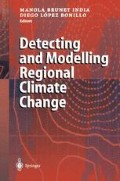Abstract
Climatic agents play a prominent role in the deterioration of building fabric, and a change in climate is expected to have a significant effect on deterioration rate. This paper distinguishes between two types of mechanism leading to building failure. In the first, increases in background deterioration occur at the building material level, due to an increase in severity of the agents involved e.g. material degradation by ultra-violet dosage. In the second, an increase in sudden damage from extreme events affects whole building elements or even whole buildings e.g. roof loss from wind gusting.
An increase in background deterioration can be offset by more frequent maintenance and by improvements in materials technology and design. In contrast, an increase in extreme climatic events would cause rapid damage requiring replacement of whole building elements, which is more visible and frequently more costly. Building codes set acceptable standards of tolerance to these background and extreme events and will play their part in ensuring a relaxed assimilation of the change if revised appropriately.
The relevant codes and standards are based on long term measured data, such as wind and snow load expectations. They need to become flexible enough to account for changing climate within the lifetime of a building, which may be more than 100 years. The shift towards performance standards that refer to a base set of climatic data has made revision easier, as the base sets can be modified in step with climate change without affecting the parent code.
Variables available from climate change modelling, however, are not always suitable for modifying this base climatic data, which may refer to event durations (e.g. rain exposure), frequencies (number of days with frost), ranges (diurnal temperature swing), dosages (lux-hours), combinations (driving rain index) or probabilities (e.g. storm risk). The variables that are required are discussed further in this paper.
Access this chapter
Tax calculation will be finalised at checkout
Purchases are for personal use only
Preview
Unable to display preview. Download preview PDF.
References
Roberts, J., Fedeski, M., Johns, J. and Eggleton, A., 1994: An investigation of the response of building fabric to projected climatic change in the UK, vols 1 and 2. Unpublished report to the Building Research Establishment under contract reference no F3/2/463. Welsh School of Architecture, Wales, 556 pp.
BSI British Standards Institute, 1986: BS 6100 — Glossary of building and civil engineering terms; Subsection 1.7.1 Performance. BSI, London
Dean, R. S., 1976: The deterioration of buildings and external climate. Progress report to Welsh School of Architecture. Unpublished.
Smith, M. (ed.) 1985: Manual of British Standards in building construction and specification. British Standards Institution/Hutchinson, London. ISBN 0–09-151921–7
Yates, T. Y. S., Inkpen, R. J. and Butlin, R. N., 1980: Possible impacts of climate change on buildings; Part II: structures and building fabric. CR76/90. Building Research Establishment, Garston, UK Unpublished, limited circulation.
Hadley Centre Climatic Research Unit, 1998: Climatic Impacts Link, Issue No 16, October. University of East Anglia. See also http://www.cru.uea.ac.uk/link/
Viner, D. and Hulme, M., 1993: The UK Met Office high resolution GCM equilibrium experiment (UKTR). Technical Note Nol for the UK Department of the Environment. Climatic Research Group, University of East Anglia.
Author information
Authors and Affiliations
Editor information
Editors and Affiliations
Rights and permissions
Copyright information
© 2001 Springer-Verlag Berlin Heidelberg
About this chapter
Cite this chapter
Johns, J., Fedeski, M. (2001). Adapting Building Construction to the Effects of Climate Change. In: India, M.B., Bonillo, D.L. (eds) Detecting and Modelling Regional Climate Change. Springer, Berlin, Heidelberg. https://doi.org/10.1007/978-3-662-04313-4_51
Download citation
DOI: https://doi.org/10.1007/978-3-662-04313-4_51
Publisher Name: Springer, Berlin, Heidelberg
Print ISBN: 978-3-642-07594-0
Online ISBN: 978-3-662-04313-4
eBook Packages: Springer Book Archive

